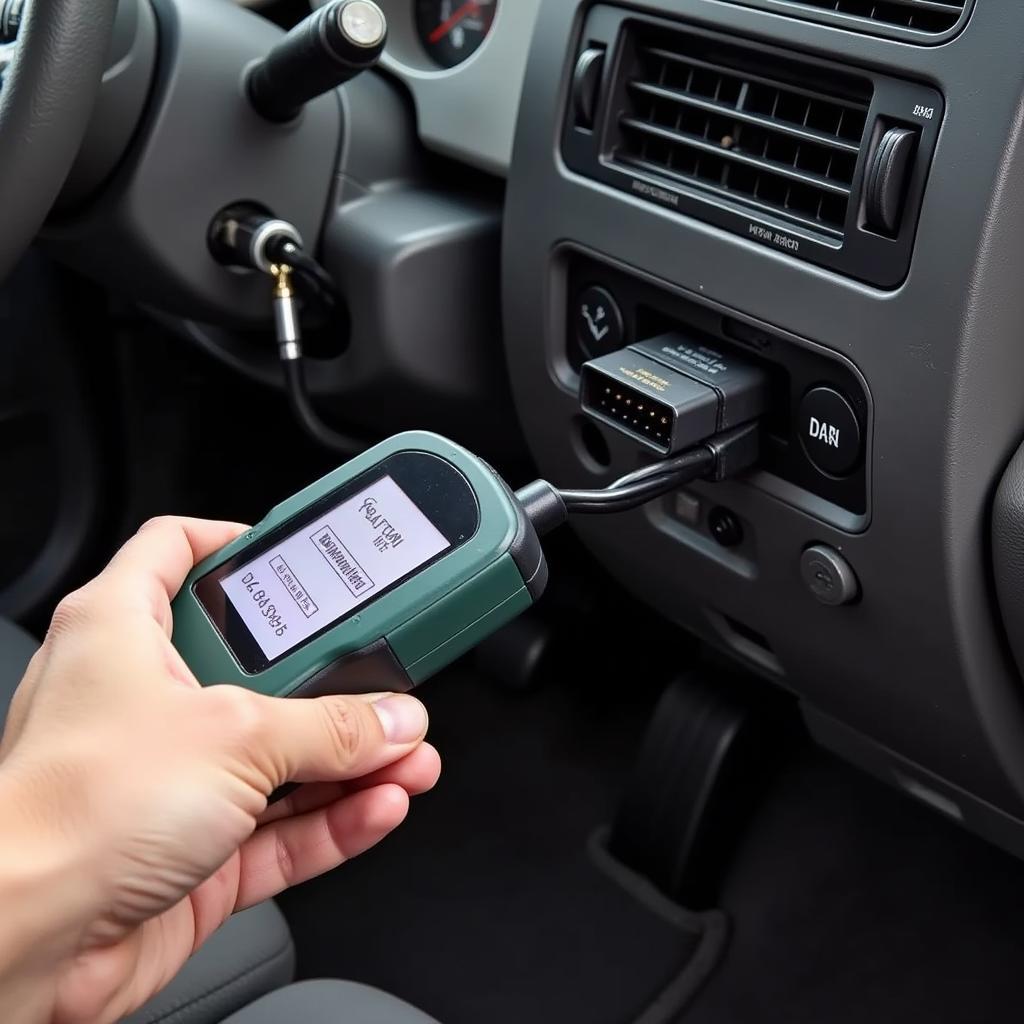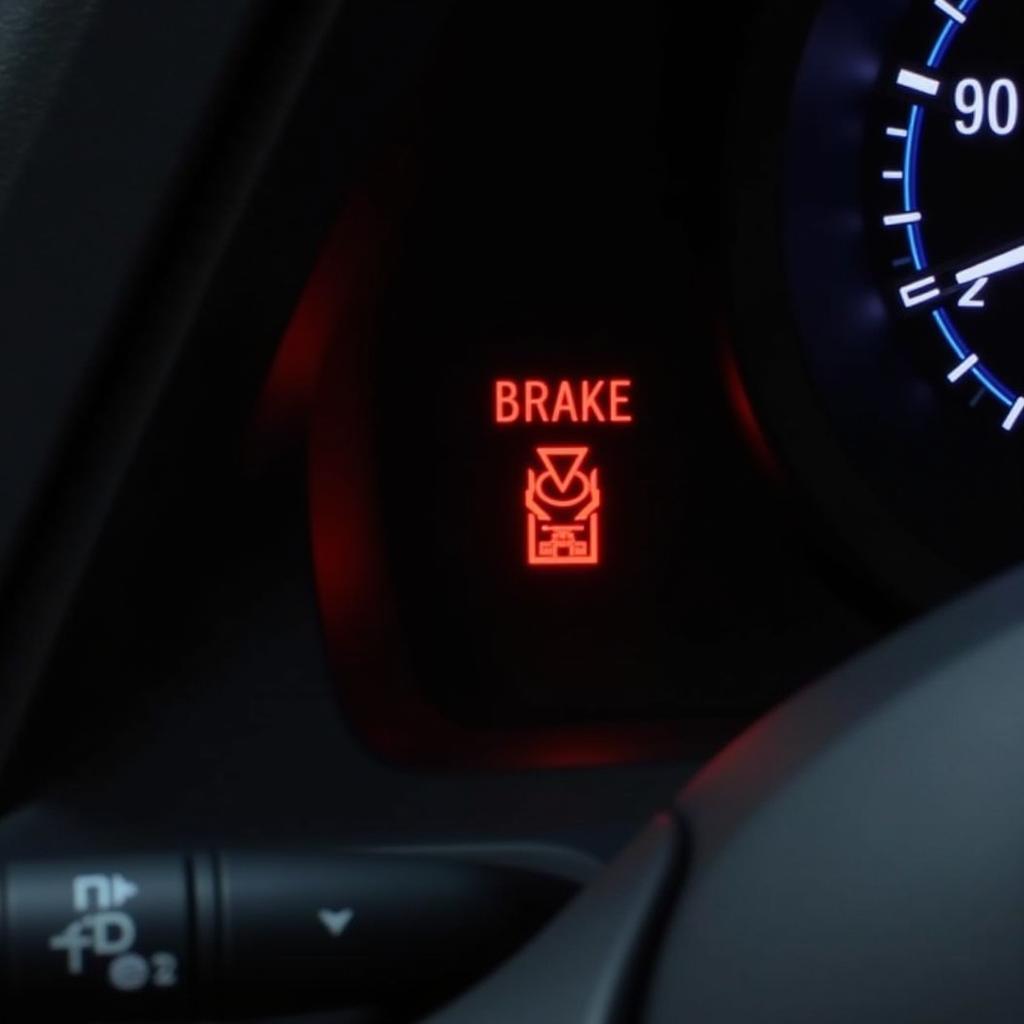The brake warning light on your PT Cruiser is a crucial safety feature, designed to illuminate if the car’s computer detects an issue with the braking system. Ignoring this warning light can lead to dangerous driving conditions and potentially expensive repairs. Understanding the common causes of a PT Cruiser brake warning light and how to address them can save you time, money, and ensure your safety on the road.
Common Causes of a PT Cruiser Brake Warning Light
Several factors can trigger the brake warning light in your PT Cruiser. These can range from simple fixes to more complex issues requiring professional attention. Here are some of the most common culprits:
- Low Brake Fluid: This is the most frequent cause of a brake warning light. Your PT Cruiser, like all vehicles with hydraulic brakes, relies on brake fluid to transmit force when you press the pedal. A leak in the system or worn brake pads reducing fluid levels can trigger the warning.
- Worn Brake Pads: Brake pads are designed to wear down over time. When they become too thin, the brake warning light system activates as a safety measure.
- Faulty Brake Light Switch: This switch is located at the top of your brake pedal and signals the brake lights to illuminate when you press the pedal. A malfunctioning switch can disrupt this signal, triggering the brake warning light.
- ABS Issues: Your PT Cruiser is equipped with an Anti-lock Braking System (ABS), which prevents wheel lockup during hard braking. A problem with the ABS module, wheel speed sensors, or wiring can illuminate the brake warning light.
- Parking Brake Engaged: Sometimes the simplest solution is the right one. If your parking brake is even slightly engaged, it can trigger the warning light.
- Faulty Brake Master Cylinder: The brake master cylinder is the heart of your braking system, responsible for converting pedal pressure into hydraulic force. A leak or internal failure in the master cylinder can lead to significant braking issues and illuminate the warning light.
Diagnosing the Problem
While some causes, like low brake fluid or an engaged parking brake, are easy to identify, others require a more systematic approach. If a visual inspection doesn’t reveal the issue, consider these steps:
- Check Your Owner’s Manual: Your PT Cruiser’s owner’s manual can provide model-specific information about the brake warning light system and any troubleshooting steps.
- Inspect Brake Fluid Level: Locate the brake fluid reservoir under the hood (refer to your owner’s manual for its exact location). If the fluid level is low, add the appropriate DOT 3 or DOT 4 brake fluid (check your manual for the correct type). Important: If you need to add fluid frequently, it indicates a leak that needs immediate professional attention.
- Listen for Unusual Noises: While driving at low speeds, listen for any unusual noises like grinding or squealing when applying the brakes. These sounds can indicate worn brake pads.
- Check Brake Light Operation: Have a friend observe the brake lights while you press the pedal. If the lights don’t illuminate, the brake light switch might be faulty.
- Use an OBD-II Scanner: For more complex issues, consider using an On-Board Diagnostics (OBD-II) scanner. This device plugs into your car’s diagnostic port and can read trouble codes stored in the computer, providing more specific information about the problem.
 Connecting an OBD-II Scanner to a PT Cruiser
Connecting an OBD-II Scanner to a PT Cruiser
When to Seek Professional Help
While some brake warning light issues can be resolved with basic troubleshooting, it’s essential to seek professional help if:
- You’re uncomfortable working on your vehicle’s braking system.
- You suspect a leak in the brake lines or master cylinder.
- The brake warning light remains illuminated even after adding brake fluid.
- The OBD-II scanner reveals codes related to the ABS system or other complex components.
- You experience any unusual braking behavior, such as pulling to one side, spongy pedal feel, or reduced braking performance.
“Brakes are a critical safety system, and any issues should be addressed immediately,” says John Smith, a certified automotive technician with over 20 years of experience. “Attempting to repair complex brake problems without proper knowledge and equipment can be dangerous. When in doubt, always consult a qualified mechanic.”
Preventing Future Brake Problems
Regular maintenance is key to preventing brake problems and ensuring the longevity of your PT Cruiser’s braking system:
- Regular Brake Inspections: Have your brakes inspected by a qualified mechanic at least once a year or every 12,000 miles, whichever comes first.
- Timely Brake Pad Replacement: Replace your brake pads as soon as they wear down to the recommended thickness. Ignoring worn brake pads can damage rotors and other brake components.
- Brake Fluid Flush: Flush and replace your brake fluid every 2-3 years or as recommended by your owner’s manual. Fresh brake fluid helps maintain optimal braking performance and prevents corrosion within the system.
Conclusion
A glowing brake warning light in your PT Cruiser should never be ignored. Understanding its common causes, performing basic troubleshooting, and knowing when to seek professional help can save you from potentially dangerous situations and costly repairs. By prioritizing brake maintenance and addressing issues promptly, you can ensure your PT Cruiser continues to provide safe and reliable braking performance for miles to come.
For more specific information about the 2006 PT Cruiser brake warning light or the broader implications of the pt cruiser brake warning, you can find detailed resources online. You might also find relevant information about brake warning light issues in other vehicles, such as the brake warning light toyota land cruiser, which can offer valuable insights into common braking system problems.

